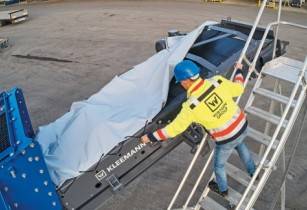W?rtsil? has announced to supply two more W?rtsil? 34SG engines for an existing power plant located in Borg El Arab, an industrial city located 45km southwest of Alexandria, Egypt
The plant is owned and operated by the National Electricity Technology company, Kahraba, a part of the Egypt Kuwait Holdings (EKH) Group. The W?rtsil? 34SG engines, which are running on natural gas fuel, will have a combined output of 19MW and are set to increase the plant?s capacity by two thirds.
This additional utility grid capacity is needed to support the growing industrial base. The existing plant runs on three W?rtsil? 34SG engines.
?The local industries impose increasing demand on power capacity. The W?rtsil? engines will help alleviate this situation and will enable us to deliver a reliable electricity supply to our customers, thus supporting industrial growth in the area. To extend the power plant with proven W?rtsil? design was a natural choice,? said Ahmed Nassr-Eldin Khaled, deputy technical general manager, Kahraba.
The new equipment will be delivered to the site in January 2020 and the extended facility is expected to become operational towards the end of that year. EKH Group operates an older plant with W?rtsil? engines.
Egypt has one of the largest electricity grids in the African continent. In recent years, there have been significant additions of large centralised generation capacity in the Egyptian grid, and the use of renewable energy sources is growing rapidly. The government has set targets for renewables to make up 42 per cent of the country's electricity mix by 2035, based on rapid solar and wind energy deployment.
With an increasing share of renewable energy sources, the grid will need more flexible generation capacity. The power plant in Borg el Arab with W?rtsil? gas engines provides flexibility, which allows integrating more renewables into the grid.



























